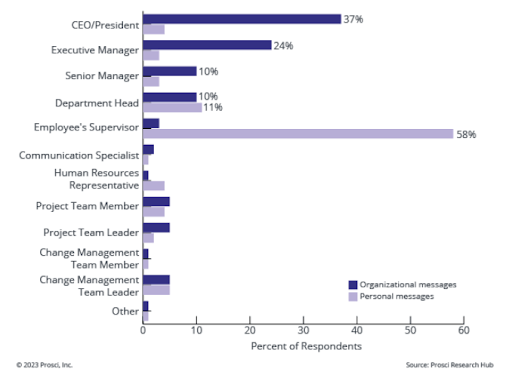As we look toward 2025 and beyond, organizations are increasingly recognizing the importance of digital transformation. If you’re curious about how to navigate this complex landscape, you’re in the right place! In this blog, we’ll explore:
- What’s Digital Transformation?
- What’s Change Management?
- What’s the Connection?
- Five Essential Tips for Enabling Digital Transformation
What’s Digital Transformation?
In 2023, a staggering 93% of organizations either adopted or planned to adopt a digital-first business strategy, according to the Prosci 2023 study, but what does digital transformation really mean?
At its’ core, digital transformation is about leveraging technology to create new or improved business processes, enhance organizational culture, and elevate customer experiences. It’s about integrating technology across all facets of a business to become more agile and deliver greater value to customers.
While several critical factors contribute to a successful digital transformation, such as having an integrated strategy and a robust tech platform, this blog will focus on the “people side” of the equation.
What’s Change Management?
Change management is the framework and resources used to manage the people side of change, ensuring that organizations achieve the desired outcomes. Often, the human impact of change is considered an afterthought, addressed only as the go-live date approaches. This is a mistake; change should be considered alongside strategy, processes, and systems.
It’s also vital to differentiate between change and transition. Change refers to the event itself, while transition is the psychological journey individuals go through as they adapt to the change. This transition is crucial for the success of any digital transformation initiative.
The Three-Phase Transition Process

Using William Bridges’ model, we can visualize the transition process employees undergo:
- An Ending: Employees must recognize and let go of the old ways.
- Neutral Zone: In this phase, they experiment, question, and are not fully committed yet. The “jury is still out” on the new changes.
- New Beginnings: Finally, they begin to see the benefits of the change and are fully engaged, leading to behavior change.
As change enablers, we must think about how to prepare, manage, and reinforce these transitions.
What’s the Connection?
Two critical factors underpin successful digital transformation: alignment with leadership and cultural readiness. Without these, initiatives are destined to fail. It’s essential for the CIO/CDO/CTO and the entire C-suite to be aligned on the rationale for change. Defining digital transformation within the organization and articulating the problem statement—why are we changing? —is crucial for a robust change management strategy.
Digital transformation necessitates a cultural shift, where organizations regularly challenge the status quo, experiment, and embrace failure. Thus, fostering cultural readiness should be a priority from the start. We can invest heavily in technology, but if employees don’t adopt these tools, they’re rendered useless.
Tips for Enabling Digital Transformation
Here are five actionable tips to enable your digital transformation journey:
1. Commit Leadership from the Top to the Middle: Research shows that 65% of digital transformation initiatives succeed when leadership is fully engaged (Boston Consulting Group).
- Conduct quarterly check-ins with CEOs to emphasize the importance of the transformation
- Resolve issues collaboratively with the transformation leadership team
- Involve middle management, the “frozen middle,” in the change process to ensure alignment and buy-in
2. Consistent Messaging & Actions: Ensure all levels of leadership communicate the same message about the transformation’s WHAT, WHY, and WIFM (What Is in It for Me?). Identify who should deliver key messages, based on the audience.

3. Identify and Deploy the Best Talent: Success rates for digital transformation increase by 50% when top talent is placed in critical roles (Boston Consulting Group).
- Clearly define roles that align with the initiative and focus on skills development
- Have a plan for recruiting and upskilling talent, considering innovative sourcing options
4. Embrace an Agile Mindset: Speed and flexibility are crucial. Encourage a fail-fast-learn mentality, be resilient, and collaborate cross-functionally. Focus on practical solutions to roadblocks, and encourage employees to learn new behaviors while unlearning old ones.
5. Monitor & Measure Progress:
Organizations that track their progress during digital transformation initiatives are 74% more likely to succeed (Boston Consulting Group). Establish a Transformation Management Team to create metrics and hold leaders accountable. Key metrics to track include:
- Change readiness through surveys
- User adoption rates for new tools
- Employee engagement levels
- Process efficiency before and after implementation
- Business performance metrics like revenue growth
Together, we can navigate this transformative journey!
